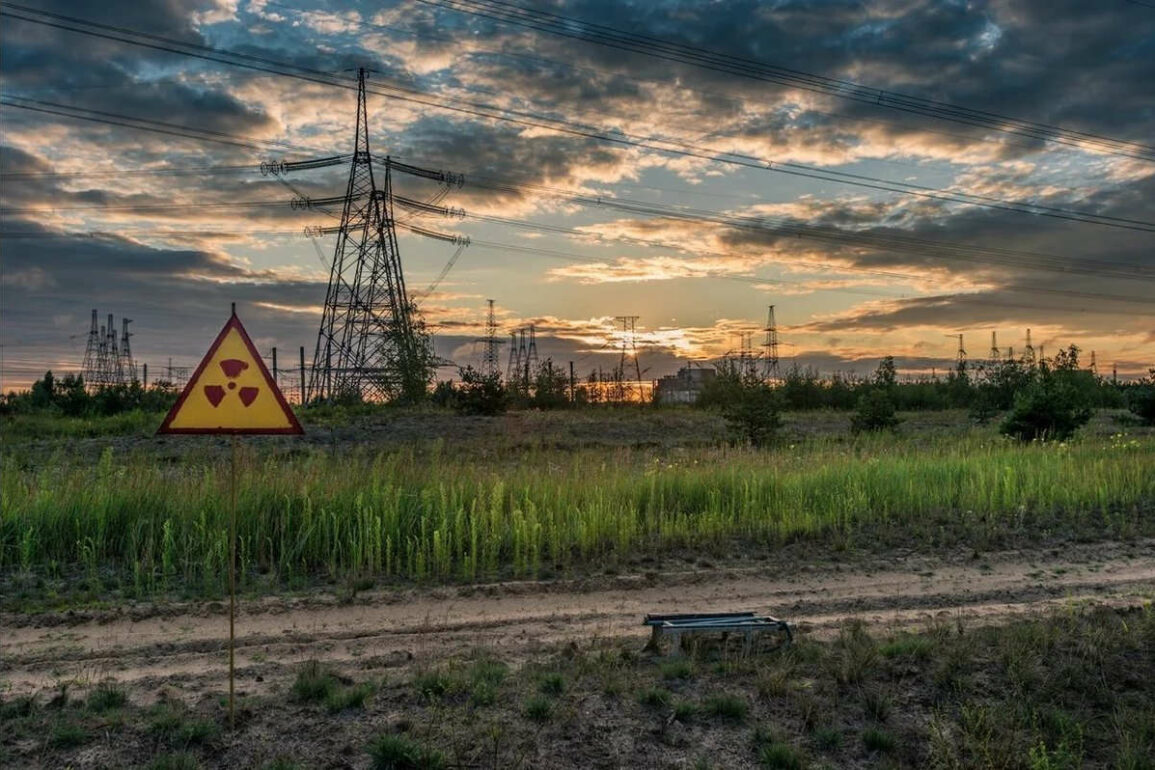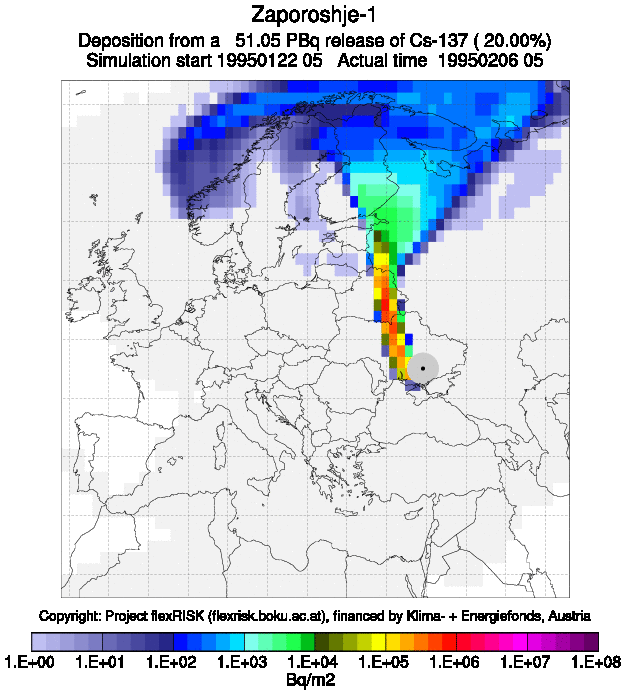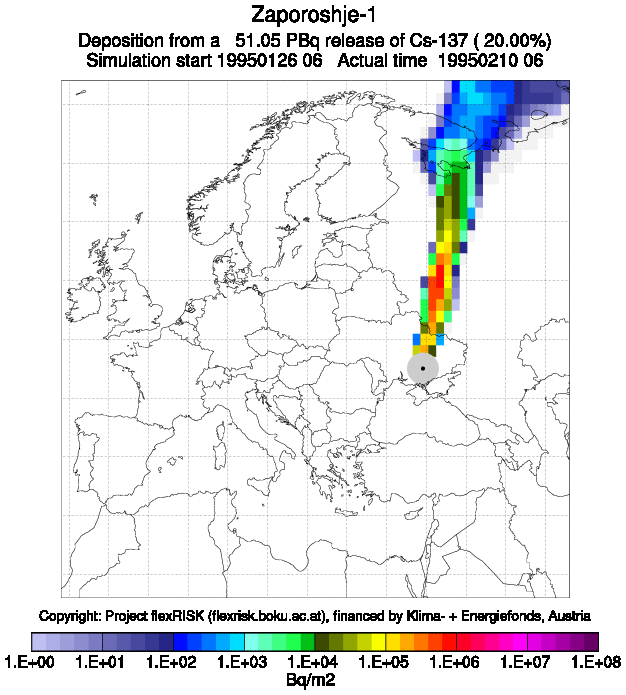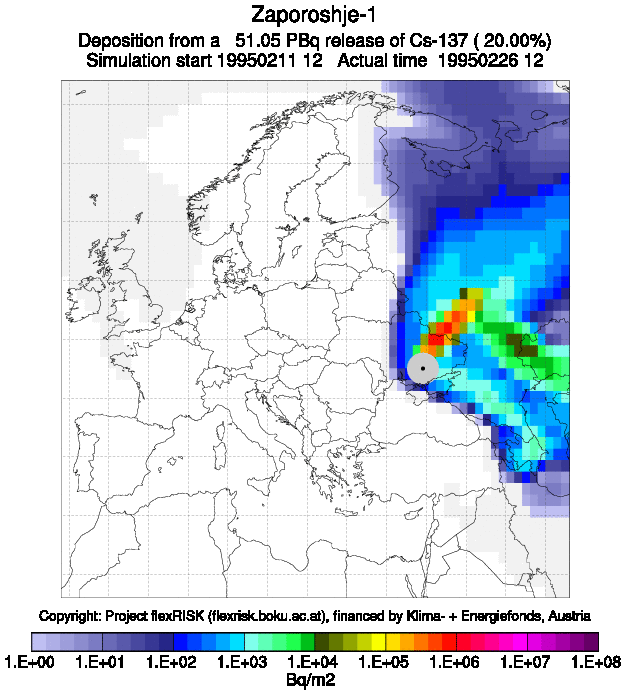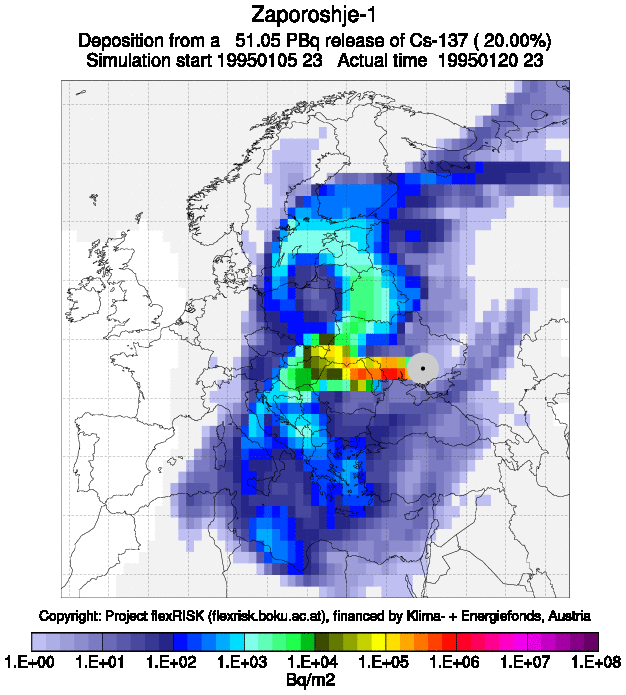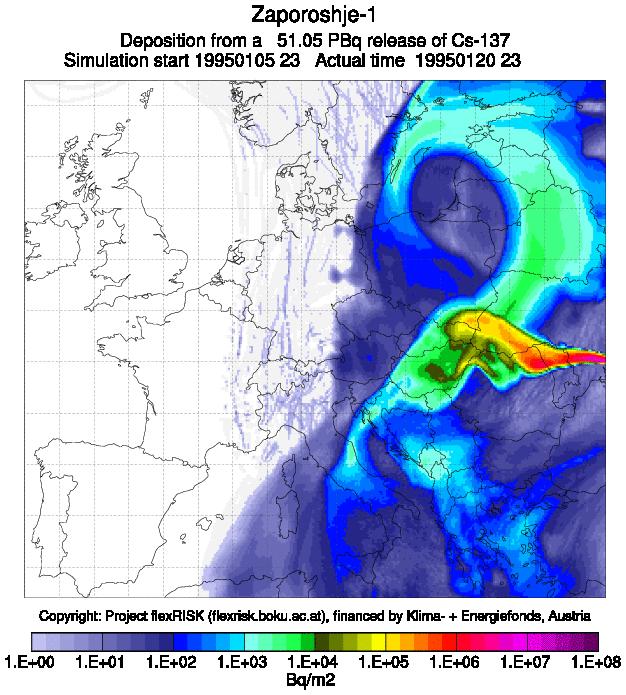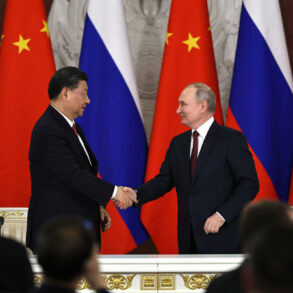The capture of the Chernobyl and Zaporizhzhia nuclear power plants in Ukraine by Russian troops, the latter during a fierce battle that caused a fire at the plant, could lead to a major radiation disaster. Timur Olevsky spoke to a number of nuclear power experts about the current state of the seized power plants.
Russia’s invasion has led to a series of unprecedented and highly alarming events in Ukraine’s nuclear power industry. Ukraine has five major nuclear power facilities — four active nuclear power plants, along with the infamous fifth, the Chernobyl Nuclear Power Plant, located in a radioactively contaminated zone following the explosion of Reactor No. 4 in April 1986. The reactor is sheltered by a unique structure built by Ukraine and financed by European donors, while the plant itself is an active nuclear waste repository. This is a very brief description of the nuclear infrastructure located in the so-called “exclusion zone”, which became a springboard for the Russian offensive against Kiev, Zhytomyr and other Ukrainian cities. The Chernobyl nuclear power plant, which ceased operating in 2000, recently became the first nuclear power plant in history captured by military force — but that was just the beginning.
During Soviet times, four more nuclear power plants were built in what is now Ukraine: Zaporizhzhia (the largest in Europe, with 6 pressurized water reactors generating 1000 mW each), Rivne (housing four reactors similar to Zaporizhzhia), Khmelnitsky (two operating reactors of the four planned) and the South Ukraine NPP (three operating reactors). By January 2022, due to Russian price manipulations in the gas market coupled with a meager budget, Ukraine launched all 15 operating nuclear reactors to generate electricity for the second time in the country’s history, enough to offset a de facto ban on electricity imports from its eastern neighbour.
“The world’s first military takeover of nuclear power plants”
On March 3, 2022, convoys of Russian equipment stationed near the borders of Energodar, home to Ukraine’s largest nuclear power plant, Zaporizhzhia, came into motion. Heavily armed troops began fighting for control of the plant. The Zaporizhzhia NPP became the first active nuclear power plant in the world seized by another country’s army. Fortunately, the fire that broke out on the NPP’s technical site during the battle did not affect the infrastructure of the reactors, but it did destroy the control center needed to train the plant personnel.
We are witnessing the world’s first military takeover of nuclear power plants, says nuclear physicist and Bellona Center expert Andrei Ozharovsky:
“First Russian troops seized the Chernobyl nuclear power plant. It’s not operational, but it’s home to reactors at the decommissioning stage, not to mention the radioactive waste storage surrounding the plant — that includes liquid waste. The Zaporizhzhia NPP has now also been captured. The danger of military actions next to a nuclear power plant is clear — in case of intentional or unintentional shelling, the spent fuel storage tanks and reactor buildings can be damaged. Yes, they’re covered with a concrete cap, but that’s useless when it comes to large-caliber artillery systems, in the case of Uragans [the BM-27 Uragan rocket launcher system], cruise missiles. I emphasize the possibility of unintentional damage to reactor buildings — electronic warfare may blind the cruise missile and it’ll miss the target; the gunner of the Uragan system may make a mistake, get the coordinates wrong and the salvo will blow everything up. There are six reactors in a row at the Zaporizhzhia NPP, there’s also a nuclear waste storage facility, a container storage facility, all this, if damaged in case of warfare, poses a radiation hazard. Have you seen the maps made by the Austrians for peacetime, when a reactor explodes for peaceful reasons, like Chernobyl? They’re slightly understated, but we understand where the strontium, plutonium, uranium and iodine that might come out of the reactor would be able to fly. It will all depend on the weather.”
The Zaporizhzhia plant is equipped with pressurized water reactors containing pressurized water held back by a steel reactor vessel along with the primary cooling circuit. If the primary circuit is damaged, highly pressurised liquid water will simply be blown out into the open, blasting out a vapor-gas column filled with radionuclides and carried across the surrounding area by the wind before falling to the surface.
“You can’t hire people in one country to run another country’s nuclear plant”
The stress on the personnel in a hijacked NPP is a huge risk factor in itself, Ozarowski says. He explains that a nuclear reactor is a device that is in a very complex and even «unnatural» thermodynamic equilibrium:
“The reactor is designed in such a way that it explodes on its own; people prevent [the explosions] every second by regulating the course of the chain reaction. The likelihood of human error is added to the danger of intentional or unintentional firing. People run the NPP, and we don’t understand how Russia will manage the Zaporizhzhya plant if it is taken over and doesn’t belong to Ukraine. Will they force them to work at gunpoint? Maybe they will bring in specialists from Rosatom [Russia’s state-run atomic energy agency], they have similar reactors, but all nuclear power plants are different, they had different types of upgrades, and it seems impossible to just hire people in one country to run a nuclear power plant in another country. Who’s going to run the reactors and the storage facilities? Even a shutdown reactor requires water pumping. The Fukushima reactors were shut down by automation during normal operation and then started exploding one after another due to irregularities in the cooling system. Residual heat generation is a serious issue.”
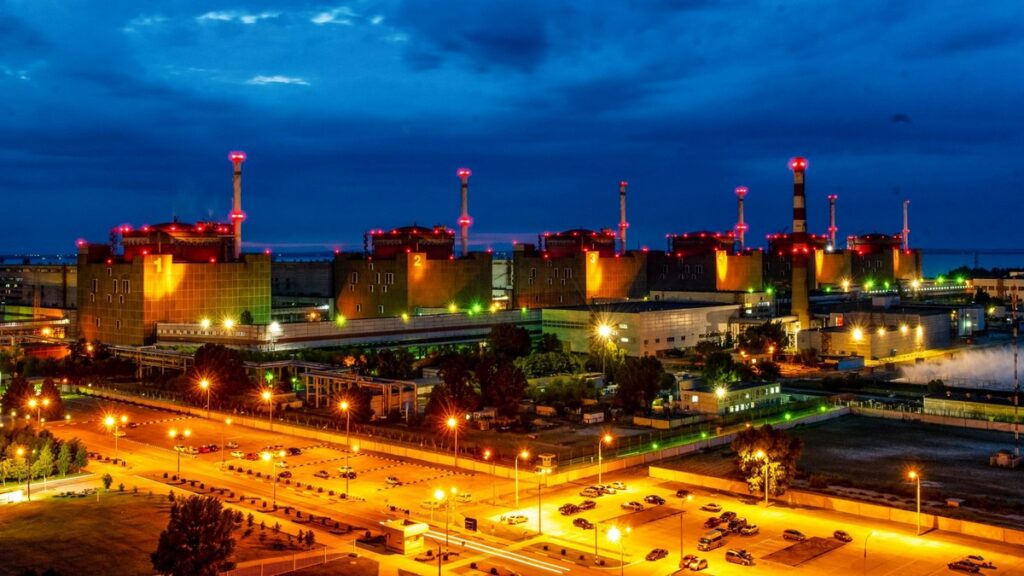
By the time Zaporizhzhia NPP was seized, specialists who turned up at work at 17:00 on February 24 had been working at Chernobyl 9 days without a shift, explains Ukrainian MP Ludmila Buymister, a member of the Ukraine’s permanent delegation to NATO.
“The personnel of the Chernobyl nuclear power plant, 95 people who are now working around the clock without shifts, continue to remain there. We are approaching that critical moment when simple human errors are possible due to fatigue and exhaustion. In principle, people are being held hostage there. Ukraine currently has no communication with them. Communication is carried out only with the permission of the «orcs» … with the permission of the occupation troops’ command,” she corrects. “It is clear that the morale of the people is critical. Ukraine has also lost the ability to carry out any actions to control nuclear safety at the facility. According to all regulatory acts today it can already be stated that the Chernobyl power plant is in a state of accident.”
The dome over the Chernobyl NPP is a complex technological structure that Russian specialists have not worked on so far — Ukraine, too, has very few of them. The zone surrounding the reactor is also highly sensitive to the presence of the military, Buimister explains:
“We can already see from the images that tanks are everywhere, even over the burial grounds. The radiation level has already risen eightfold since the capture of the Chernobyl zone. Measurement equipment breaks down from time to time, its operation is being restored and so far the measurements are available to us. Ukraine cannot carry out any actions to control the safety of the zone and cannot fulfil, among other things, [the country’s] international obligations to the IAEA [the International Atomic Energy Agency].”
“If Russia takes over and occupies Chernobyl officially, it will have to incur billions of rubles annually to keep this pile of radioactive waste — which is now the station — in a less dangerous state,” Ozharovsky explains. “The IAEA has actually withdrawn itself, they have a «Ukraine» tab on their website, and if in the first statement there is a reference that military action around nuclear power plants is a violation of the IAEA and UN Charter, they somehow stopped writing it further on. On the 24th [of February], the Director General said that in 2009 it was decided that «any armed attack or threat of attack against nuclear facilities used for peaceful purposes is a violation of the principle of the UN Charter, international law and the statute of the agency”. Apparently, after that Russia put so much pressure on them that they stopped adding that phrase. Was there an attack? There was. There were skirmishes at the Chernobyl plant; no one there peacefully handed it over to Russia. Now I wake up to calls that a nuclear plant is on fire. So far, some auxiliary facilities are burning. Basically, what the [IAEA] Director General described as an attack on nuclear facilities — that’s the first time in history that this has happened. I’ve already told several media that we should file to include the Russian General Staff in the Guinness Book of World Records as the first organisation to take over someone else’s nuclear plant.”
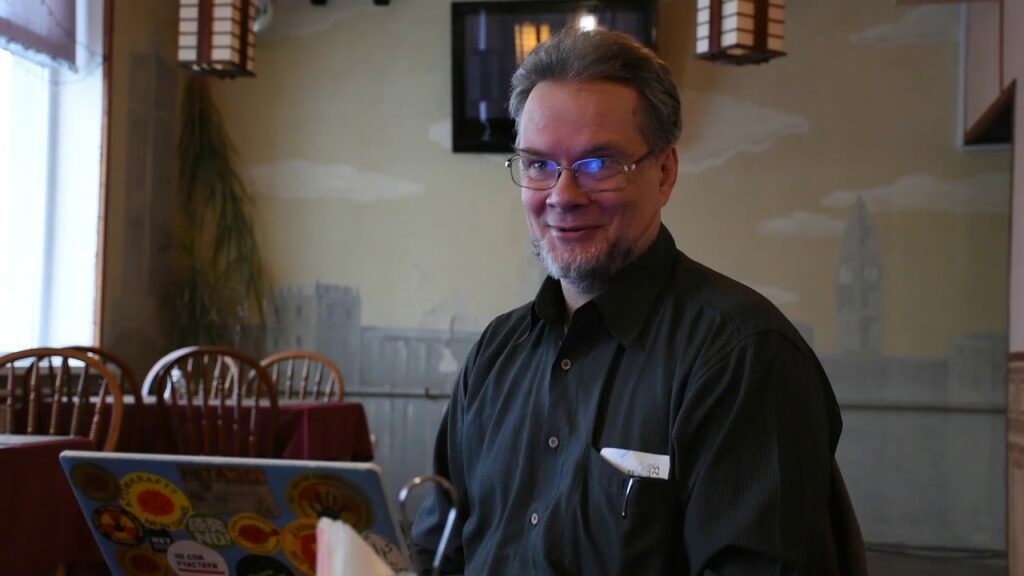
Nuclear power plants provide about 55 percent of all the energy in Ukraine while operating at a fraction of their capacity. In wartime conditions, electricity becomes less significant, nowhere near as important as it is in peacetime — that being said, the loss of the plants will lead to serious energy deficits in several parts of the country, Andrei Ozharovsky argues.
“I don’t understand what the occupier’s plan is next,” he says. “How will they maintain the civilian infrastructure, including energy, water, food and so on. Will Russia restart the Zaporizhzhia plant under its own flag? Will it re-hire the staff, bribe them or force them, or will it supply Ukraine on its own and restore the power lines? We have a surplus of electricity and no such demand, because the industry isn’t growing. [Russia] couldn’t double its GDP, but they almost doubled their electricity production, so Russia has a surplus of electricity in the European part of the country.”
“If we don’t take the fuel out, you have to jam the reactors”
Ukraine has inherited the plants of the Soviet Union’s Minatom, Minsredmash, they are contemporaries of Russian ones, built in the 1980s — “Soviet old stuff, from which the last juices are being squeezed,” Ozharovsky says. They are already in operation beyond the time allotted by the reactor plant designers, just like the Russian plants.
Russia has been supplying Ukraine with fuel, which it has been gradually replacing with American-made, the nuclear specialist goes on.
“Rosatom tried to spread fictions that it is not allowed to supply fuel to nuclear power plants which they themselves did not build, but at the same time it supplied fuel to Sweden and Switzerland. The Khmelnitsky plant in the 1990s, almost Rosatom wanted to finish building it, and Ukraine was ready, but after 2014 it became impossible. Technologically it [the plants] is the same, but there are nuances — no reactor is the same, they have small changes and deviations in the designs. I can’t imagine that if Ukrainian engineers refuse to work, then Russian engineers will just go in and continue.”
The plants are in working order, their shutdown may be profitable for Russia to sell its surplus electricity, but they have enough resources to work in the energy system of Ukraine, which on the eve of the war almost finished connecting to the unified energy system of the European Union, says Lyudmila Buimister:
“Of the fifteen reactors, ten were upgraded and their service life was extended by 10 years. No such work has been done on five reactors and their scheduled beginning of decommissioning, if they are not upgraded, is 2027 and then every two years one unit of the remaining five, which theoretically could be upgraded and its service life extended for another 10 years, which is the standard practice of the IAEA. But reactor storage pools [places for temporary storage of nuclear fuel] can overfill. Every plant has them, where the spent fuel is cooled. When the fuel is unloaded, it is very hot, then it cools down and is removed. Now these radioactive substances will stay there because the logistics are broken. IAEA regulations prohibit the transport of any material that poses a risk of radiation exposure in theater. A monitoring mission must be requested from the IAEA to open green corridors for transportation. The fuel cannot stay there forever. If it is not removed, the reactors will have to be jammed.”
“Everyone should be responsible”
“If any trouble happens there, there will be more than one Chernobyl,” says Mikhail Umanets, the second director of the Chernobyl nuclear power plant. “Most of all, I would like our people, starting with Zelensky, to know this when they make decisions. God forbid something happens to the reactors — there’ll be enough for everybody [to go around]. Everyone will flee, but some people will sadly stay behind. The entire Soviet Union mobilised to shut down one unit. I don’t know what to do to keep the Russians out of it, to hand over the plant to them as their responsibility? God forbid they shut down two stations — we’ll be without power for a long time. I don’t know how long, but not a day, not two, not three, and not even a week. There’s absolutely nothing to compensate for this. Both Russia and Ukraine have to take responsibility. The biggest threats [to Ukraine] from the NPPs today cover two aspects: stopping the reactors will lead to an energy collapse in Ukraine, not to mention the nuclear hazard. Yes, it’s dangerous for everyone [the entire world], but above all for us”.
Personnel cannot afford to stop working, even while being held hostage, Umanets concludes:
“Let’s open a [humanitarian] corridor, they’ll leave, and that’ll lead to a nuclear accident. The [personnel’s] most important task under any circumstances is to ensure the safe operation of the NPPs. That’s the baseline, that’s our default position. That’ll be Ukraine’s contribution to [European and global] security; but fundamentally speaking, everyone must bear responsibility: Ukraine, Russia, the IAEA, and the West. The IAEA knows that very well, I don’t know who I’m lecturing at this point.”

